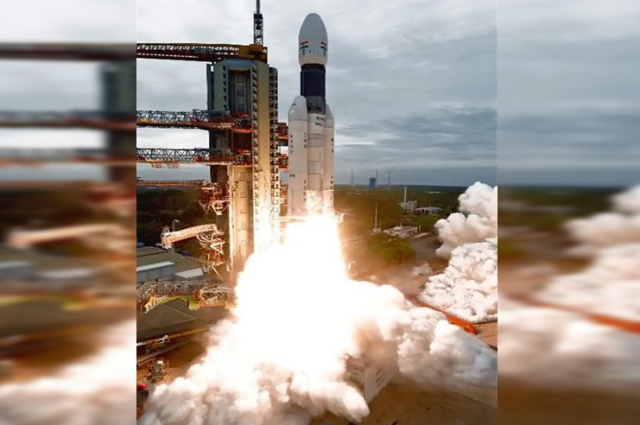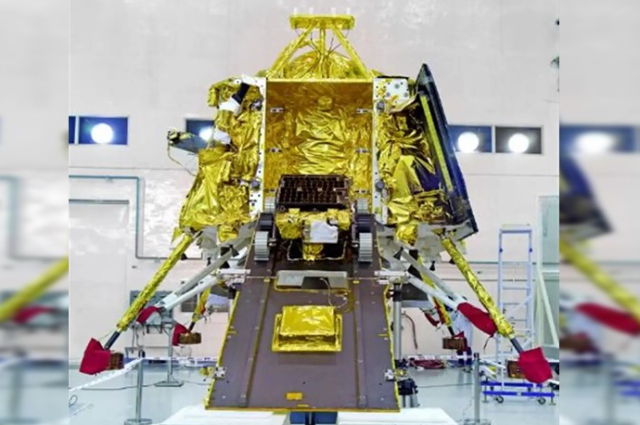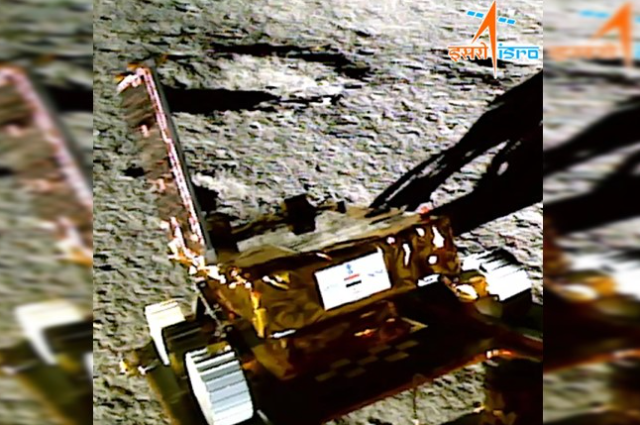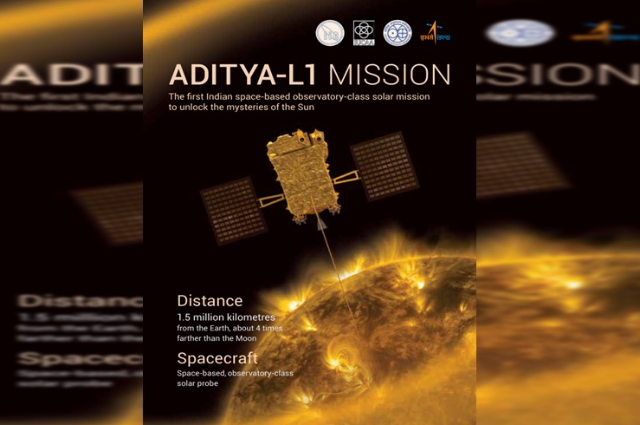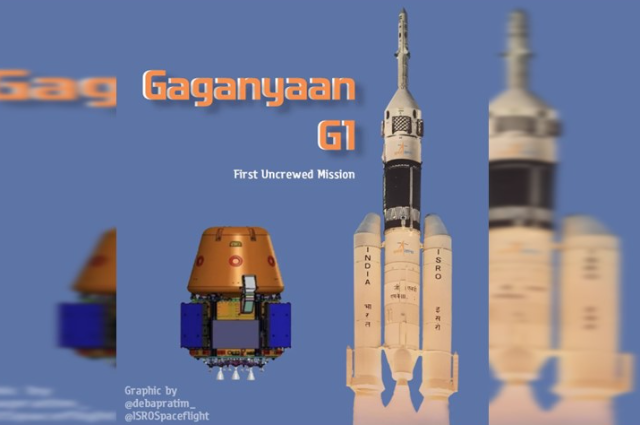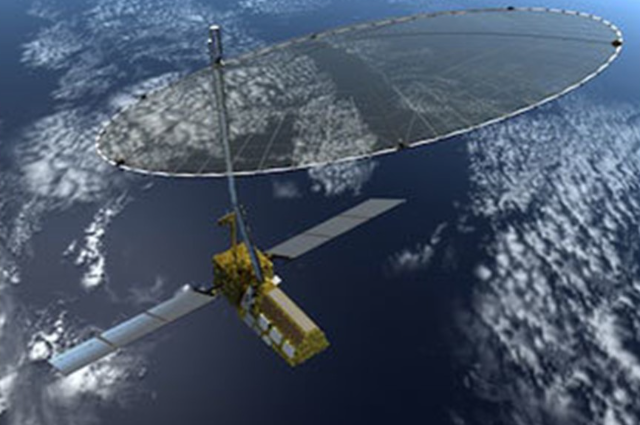Introduction
The Indian Space Research Organization (ISRO), the primary space agency of the Government of India was founded in 1969 to advance space technology and apply it to various national activities of Space missions. It has operationalized Indian domestic satellites to provide communication services and remote sensing satellites to chart natural resources. Simultaneously, it has also created launch vehicles—the Polar Satellite Launch Vehicle (PSLV) and Geostationary Satellite Launch Vehicle (GSLV)—to position the satellites in orbit. Over time, ISRO has achieved numerous feats including the lunar mission, the Space Capsule Recovery Experiment, and the Mars Orbiter Mission. Few other government institutions have achieved such an impressive sequence of accomplishments. This endeavor seeks to uncover the fundamental factors contributing to this exceptionally high success rate.
India's leap towards Moon: background Explained
Who can resist admiring the Moon's enchanting view? Whether it displays a crescent or full phase, the Moon captivates children, poets, and individuals who connect with nature due to its tranquil elegance, its feeling of serenity, and the emotions it evokes. Scientists have a keen interest in comprehending the Moon's origin and attributes, and if feasible in investigating the potential of inhabiting it – and these inquiries necessitate a lunar expedition. Few nations have engaged in such investigations, but India is competently positioned with its industrial and technological infrastructure and skilled workforce to embark on a close-range examination of the Moon. This accomplishment adds another achievement to the Indian Space Research Organisation's (ISRO) accolades. It's no surprise that the endeavour attracts talented young individuals from the country's premier institutions.
The Moon offers the most effective connection for comprehending Earth’s initial history and presents an intact account of the internal environment of the Solar system. It might also serve as a foundation for forthcoming human space exploration of the solar system and an unparalleled laboratory, distinct from any on Earth for fundamental physics research. Despite numerous lunar missions, various questions remain unanswered. Persistent high-resolution investigations of its exterior, internal structure and its tenuous exosphere are crucial for dealing with variations in the composition of the lunar surface and for retracing the source and progression of the Moon.
The definite proof provided by India's initial lunar mission, Chandrayaan-1, regarding the widespread existence of surface water and the suggestion of polar water-ice deposits beneath the surface, emphasizes the need for more targeted investigations into the amount of water on the exterior, underneath the surface, and in the delicate lunar exosphere. These studies are essential to uncover the genuine source and accessibility of water on the Moon.
To broaden our understanding of lunar science, Chandrayaan-2 was sent into space on July 22nd, 2019, to conduct detailed examinations of lunar topography, mineral content, surface chemical makeup, thermophysical attributes, and the moon's outer atmosphere. Exactly a year ago, on August 20, 2019, it was positioned in the moon's orbit. Even though the endeavor to achieve a gentle landing didn't succeed, the orbiter, outfitted with eight scientific tools, was effectively positioned in the moon's orbit. The orbiter has completed over 4400 revolutions around the Moon, and all instruments are presently functioning optimally.
Different kinds of moon missions and exploring them with examples
Flybys refer to missions where the spacecraft approaches the Moon closely without entering its orbit. These missions were either intended to observe the Moon from a distance or were on route to explore other celestial bodies or deep space. Pioneer 3 and 4 from the United States, along with the USSR's Luna 3, serve as early instances of flyby missions.
Impact Missions are an augmentation of Orbiter missions. As the primary spacecraft continues its lunar orbit, one or more devices on board undergo an uncontrolled descent onto the lunar terrain. Although they are damaged upon impact, they manage to transmit valuable lunar insights during their trajectory. For instance, a tool named Moon Impact Probe (MIP) aboard Chandrayaan-1 was intentionally crash-landed on the Moon using a similar approach. ISRO asserted that the information conveyed by the MIP provided supplementary confirmation regarding the existence of water on the lunar surface.
Orbiters, on the other hand, are spacecraft designed to enter lunar orbit for extensive examinations of the Moon's surface and atmosphere. India's Chandrayaan-1 was among the Orbiter missions, alongside 46 other lunar expeditions from different nations. Orbiter missions represent the most prevalent approach for investigating planetary bodies. The Chandrayaan-2 mission also included an orbiter, which remains operational, circling the Moon at an altitude of approximately 100 km.
Rovers represent distinct wheeled payloads situated on the lander, capable of disconnecting from the spacecraft and traversing the lunar terrain. They gather highly valuable data that the instruments within the lander would be incapable of acquiring. The rover designated as Pragyaan was carried by the Vikram lander as part of the Chandrayaan-2 mission.
Human missions, these missions encompass the safe touchdown of astronauts on the lunar surface. Presently, only NASA from the United States has achieved the feat of successfully landing human beings on the moon.
Mission Chandrayaan 1: The first discovery of water on the moon
ISRO initiated its inaugural endeavour with the Chandrayaan 1 (i.e., "Lunar Vehicle 1") mission, commencing in October 2008 with the prosperous launch of the Polar Satellite Launch Vehicle (PSLV). The rocket conveyed a lunar orbiter purposed to circumnavigate the Moon, similar to a satellite, accompanied by an impact probe. The orbiter relinquished the impact probe to strike the surface of the Moon's south polar region, yielding pertinent data for the formulation of a lunar rover designated for an ensuing mission. During its descent, the impactor probe amassed information concerning the chemical composition of the lunar atmosphere.
A notable mention is that this mission unveiled the presence of water molecules on the Moon, an observation of paramount significance for forthcoming manned missions. Additionally, the probe etched the national flag of India onto the lunar surface, signaling our arrival. Despite its duration falling short of the initially envisaged two years, potentially due to overheating challenges within the orbiter, the mission fulfilled the majority of its scientific goals. As confirmation of its success, the international community covered it with many praises.
Chandrayaan 2: mission of hits and misses
The subsequent mission, Chandrayaan 2, took place in July 2019. It was launched using a Geosynchronous Satellite Launch Vehicle (GSLV). Its payload encompassed a lunar lander that carried a rover intended for deployment on the Moon. Regrettably, the lander crashed on the lunar surface due to a software malfunction, preventing the detachment of the rover and thereby halting any further examination of the Moon’s terrain. An individual named Shanmuga Subramanian, residing in Chennai and possessing expertise in image analysis managed to locate the debris of the lander. This discovery was later validated by NASA. The involvement of ordinary citizens in significant scientific undertakings is an encouraging trend and researchers should actively strive to foster such opportunities.
The main objective of the Chandrayaan-2 mission was to showcase the gentle touchdown of the 'Vikram' lander on the Moon's South Pole, carry out operations of the robotic rover Pragyan on the lunar terrain, and obtain captivating pictures and information. Around September 7, in the final stages of descent, the communication connection was lost with Vikram at a distance of roughly 2.1 kilometers from the moon's surface. Following three days, ISRO verified the presence of Vikram utilizing images transmitted by the Orbiter.
Like in previous missions, the scientific expedition will investigate the chemical composition of the lunar surface, local seismic movements, and levels of plasma, among other discoveries that are yet to be made. The propulsion component will carry a payload known as 'Spectro-polarimetry of Inhabitable Planet Earth' (SHAPE), which will monitor radiation from our planet to aid in identifying the indications of life. Subsequent missions can then utilize this information to seek out signs of life on potentially habitable exoplanets. Therefore, Chandrayaan 3 also has the objective of extending its focus beyond the Moon.
Insights gained from Chandrayaan 2 will help prevent design weaknesses that could lead to failures. Some of these 'improvements' already encompass strengthened legs on the lander and software upgrades that involve possible failure situations as well in case of worst circumstances.
How does Chandrayaan-2 differ from the Chandrayaan-1 Mission?
Chandrayaan-1 marked India's inaugural lunar expedition. ISRO effectively launched this spacecraft in 2008 using the PSLV-C11 rocket. Although it was engineered for a 24-month operation, it experienced communication loss after functioning for approximately a year. The primary objective of this mission was to encircle the Moon at an altitude of 100 km above its surface, aiming to undertake chemical, mineralogical, and photogeological surveys of the lunar terrain. This was enabled through the incorporation of 11 scientific instruments carried by the spacecraft. The identification of water molecules on the lunar surface by Chandrayaan-1 stood as a notable milestone in the realm of space exploration.
In contrast, Chandrayaan-2 represents a sequential mission following the Chandrayaan-1 venture. It encompasses an Orbiter, Lander (Vikram), and Rover (Pragyaan). Divergent from Chandrayaan-1, this subsequent lunar expedition was meticulously devised to execute a gentle touchdown of Vikram on the lunar area. Additionally, it aimed to deploy a hexapod Rover (Pragyaan) to discern water molecules in the shadowed precincts of the Moon. The GSLV MK-III M1 launch vehicle was employed to lift Chandrayaan-2, encircling 14 enhanced scientific payloads when upgraded with the Chandrayaan-1 mission.
Chandrayaan - 3: The Scientific convention that propelled India
The journey conducted by the Indian Space Research Organisation (ISRO) commenced on July 14th, 2023. Utilizing the launch vehicle LVM-3, Chandrayaan-3 was launched on a 384,000km voyage from the Satish Dhawan Space Centre situated in Sriharikota, along the southeast coast of India. Chandrayaan-3 completed multiple orbits around Earth to gather speed before initiating its month-long path toward the Moon. Through a series of three consecutive maneuvers on August 6th, 9th, and 14th, the spacecraft was progressively brought closer to the Moon. The ultimate maneuver on August 16th positioned Chandrayaan-3 into an orbit measuring 153km x 163 km, gradually bringing it nearer to its eventual landing point.
The lander disengaged from the propulsion module on August 17th and decelerated, positioning itself in an orbit where the closest point to the Moon (Perilune) was 30 km and the farthest point (Apolune) was 100 km from the lunar surface. During India's inaugural Moon mission, water molecules were detected on the lunar expanse. However, the second endeavor, Chandrayaan-2, suffered a mishap during its critical landing attempt in 2019.
The journey to be completed by the Vikram Lander
Chandrayaan-3 consists of an Indian-manufactured lander module (LM), a propulsion module (PM), and a rover. The primary objective of the mission is to create and showcase innovative technologies for interplanetary endeavors.
The Vikram lander is equipped with various instruments such as Chandra’s Surface Thermophysical Experiment (ChaSTE) to gauge surface thermal properties, an Instrument for Lunar Seismic Activity (ILSA) to measure seismic activity around the landing area, the Radio Anatomy of Moon Bound Hypersensitive ionosphere and Atmosphere (RAMBHA) to examine the gas and plasma environment and a passive laser retroreflector array supplied by NASA for lunar ranging research. The Pragyan rover (named after the Sanskrit word for 'wisdom') will carry out an on-site chemical analysis of the lunar surface as it roams the highlands near the Moon's southern pole. Operating for one lunar day, equivalent to 14 Earth days, the six-wheeled rover will conduct experiments in this region.
The rover is equipped with two instruments for investigating the local surface elemental composition - an Alpha Particle X-ray Spectrometer (APXS) and a Laser Induced Breakdown Spectroscope (LIBS). Amitabha Ghosh, a contributor to NASA's Mars Rover mission and a member of the Mars Pathfinder mission team, mentioned that while the achievement will be commemorated as a significant milestone in Indian space exploration history, scientists are eagerly anticipating the rover's upcoming scientific exploration and the fresh insights it will provide about the Moon's south pole region.
Following the setback of Chandrayaan-2's mission, attention was directed towards the pivotal touchdown, necessitating thorough simulations. The lander was furnished with sturdier landing supports, additional propellant, and enhanced detectors. Modifications were made to the software, and the designated landing zone was enlarged. Numerous obstacles were encountered while constructing the pair of instruments that Pragyan is currently transporting.
ISRO plans after Chandrayaan - 3: New opportunities and missions awaiting
- Aditya L1: Mission to study the Sun
Aditya L1 is set to become India's inaugural space mission aimed at investigating the Sun. The spacecraft will be positioned within a halo orbit encircling the Lagrange point 1 (L1) of the Sun-Earth system, located approximately 1.5 million km away from Earth. This strategic placement within the L1 halo orbit offers a significant advantage, allowing for uninterrupted observation of the Sun without encountering any periods of concealment or eclipses. Consequently, this positioning offers an enhanced opportunity to closely monitor solar activities and their impact on space weather in real time.
The satellite is equipped with seven distinct instruments designed to scrutinize the photosphere, chromosphere, and the Sun's outer layers (corona) utilizing electromagnetic and particle-based, as well as magnetic field, sensors. Capitalizing on the unique vantage point of L1, four instruments are directly oriented towards the Sun, while the remaining three instruments conduct on-site analyses of particles and fields present at the Lagrange point L1. This approach furnishes valuable scientific insights into the propagated effects of solar dynamics within the interplanetary medium. The instruments carried by the Aditya L1 spacecraft are expected to yield vital data crucial for comprehending issues like coronal heating, coronal mass ejections, pre-flare and flare activities, their attributes, the dynamics of space weather, and the dissemination of particles and fields, among other phenomena.
- Gaganyaan : The mission of human spaceflight
The Gaganyaan initiative aims to exhibit the potential for human space travel by deploying a team of 3 astronauts to an orbit 400 km above Earth's surface, for a mission spanning 3 days, and ensuring their secure return by landing within the waters of the Indian Ocean. This endeavor is achieved through an optimal approach, taking into account internal expertise, the proficiency of the Indian industrial sector, and the intellectual capacities of domestic educational and research establishments, in conjunction with state-of-the-art technologies accessible from global organizations.
Prerequisites for the Gaganyaan mission include the advancement of numerous fundamental technologies, such as a launch vehicle certified for human transport, guaranteeing the safety of the crew during their journey to space, a Life Support System to replicate terrestrial conditions for the crew in space, contingencies for the emergency escape of the crew, and the ongoing evolution of crew management strategies about training, retrieval, and crew recuperation.
- NASA-ISRO SAR (NISAR) Satellite
The NASA-ISRO SAR (NISAR) project is a collaborative effort between NASA and ISRO to develop a Low Earth Orbit (LEO) observatory. NISAR is designed to comprehensively map the entire globe within 12 days. It will offer consistent spatial and temporal data, facilitating the comprehension of alterations in Earth's ecosystems, glaciers, vegetation mass, rising sea levels, underground water, and natural perils like earthquakes, tsunamis, volcanoes, and landslides. NISAR houses a dual-band Synthetic Aperture Radar (SAR) that functions in both L and S bands. This SAR employs the Sweep SAR technique to achieve a wide coverage area while maintaining high-resolution data.
The SAR payloads are positioned on the Integrated Radar Instrument Structure (IRIS), and together with the spacecraft bus, they constitute the observatory. The collaborative effort between Jet Propulsion Laboratories and ISRO is bringing this observatory to life. Its purpose extends beyond national requirements, providing the scientific community with valuable data that promotes research into surface deformation measurements through the repeat-pass InSAR method.
This primary collaboration would witness substantial input from both organizations. NASA bears the responsibility of furnishing the L-Band SAR payload apparatus, whereas ISRO has furnished the S-Band SAR payload. Both of these SAR mechanisms will utilize a generously sized (approximately 12m in diameter) shared deployable reflector antenna. Furthermore, NASA will supply engineering payloads for the expedition, containing a Payload Data Subsystem, High-rate Science Downlink System, GPS receptors, and a Solid State Recorder.
Conclusion
Since the 1960s, India has been sending satellites into space not only for its own use but also for other nations. A notable achievement was the successful placement of a satellite in Mars' orbit in 2014. Considering the current growth trend, India's space industry has the potential to become a trillion-dollar economy in the near future. Up until April, India has launched a total of 424 satellites for 34 different countries, which include nations like Israel, the United Arab Emirates, Kazakhstan, the Netherlands, Belgium, and Germany. Over the past five years, the Indian Space Research Organisation (ISRO) has generated around 1.1 billion rupees (equivalent to £10.2 million) from launching satellites for foreign countries.
Team unity is a defining characteristic of ISRO. The leadership has consistently excelled in skillfully coordinating the endeavors of every team member towards a shared objective, successfully achieving the intended goal. This isn't a rare occurrence – project after project, we witness this unfold as a natural outcome. In fact, this phenomenon becomes evident when we observe the pictures released by ISRO following the launch of a vehicle carrying a substantial payload. These images showcase individuals of various ages, backgrounds, and beliefs, all brimming with visible excitement. Whether young or old, conventional or contemporary, religious or non-religious; they all resemble a true identity of India. Their elation clearly demonstrates the achievement of their collaborative work, an evidence to the effective leadership that infuses at every level of the organization.
. . .
References:
- https://www.nature.com/articles
- https://www.isro.gov.in/Chandrayan_2.html
- https://www.britannica.com/technology
- https://www.thehindubusinessline.com
- https://www.isro.gov.in/Aditya_L1.html
- https://www.isro.gov.in/Gaganyaan.html
- https://www.isro.gov.in/NISARSatellite.html
- https://www.euronews.com
- https://www.academia.edu
- https://www.nature.com/articles
- https://papers.ssrn.com/sol3/papers.cfm
- https://www.thehindu.com

